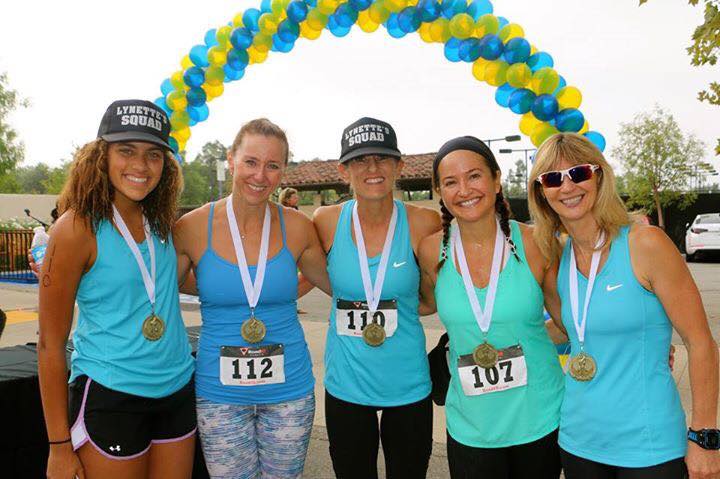Why Zone Two training is taking the running world by storm (10 benefits)
July 12th, 2024 | 3 min. read
By Jen Azevedo

Running is one of the oldest sports in history. It is an activity almost anyone can enjoy — and improve in. Running strengthens your legs, improves your heart health, reduces stress, and requires little more than a decent pair of shoes and some free time.
Improving your capacity for speed and distance is important as a runner. This often means setting goals and pushing yourself to reach those goals by specific dates. But that is not always the most effective way to hit your objective. In fact, it can backfire completely, leaving you tired and sore.
As science evolves and we learn more about our bodies and the effects of running, new strategies emerge to help runners achieve their goals. A running approach that has recently become very popular is the concept of Zone 2 training.
The Paseo Club is a social club in the Santa Clarita Valley. It has supported the SCV community in fitness and health for over twenty years. Many of our certified fitness trainers are also runners and are excited about what Zone 2 running is doing for them.
In this article, we will compare the traditional running model with Zone 2, define what Zone 2 is, its benefits, and how to know if you are in Zone 2 on your next run.
 What is the traditional model of running?
What is the traditional model of running?
There are plenty of training plans to start running — Couch to 5K programs, ultramarathon training, apps, and private coaches. They each have various recommendations to assist people at all fitness levels and with various running goals.
But most of them have one thing in common — they rely on traditional running theory based on the No Pain, No Gain philosophy.
Most programs and coaches advise you to go out and run your hardest to stay at a goal pace during every run. This type of training can be beneficial to a point, but it can also lead to burnout, fatigue, and injury.
What is Zone 2 running?
The core concept behind Zone 2 is that every runner at every level has a pyramid. The stronger the foundation of that pyramid, the taller and stronger the top becomes.
Zone 2-level running is your foundational pace, where your base can be established and built upon. With a strong foundation, you experience more success in distance, time, speed, and endurance.
All zones of training are beneficial as you attack new goals — you’ll never get faster without running faster — but the Zone 2 run is seen as the best balance spot for continued training with less risk of injury.
 But what does Zone 2 running look like?
But what does Zone 2 running look like?
When you go out for a run, you likely hit a stride that leaves you huffing and puffing, thinking this is the best way to push yourself and get gains. That is why Zone 2 running is rarely done — it is deceptively easy.
Zone 2 is a slower, more modest pace compared to what many runners are accustomed to. It is recommended that you run at least 45 minutes to receive the maximum benefits.
Signs of running in Zone 2 are:
- The run is an enjoyable (slower) pace
- You can have short conversations in choppy sentences
- Use a heart rate monitor and aim to run at 60-70% of your maximum heart rate
What are the benefits of Zone 2?
It can take a few weeks to start feeling the benefits of your new training plan, especially based on your overall goals. But the lessened strain on your body while adding consistent mileage to your week will be noticeable within days.
- Less injury
- Improve distances
- Lower blood pressure
- Improved heart health
- Lower resting heart rate
- Less fatigue and burnout
- Greater metabolic flexibility
- Improves insulin resistance
- Improves your Zone 4 and 5 performance
- Increased mitochondria and improved function, giving you more energy as you run and increasing your overall health and longevity.
What do Zone 2 runners at the Paseo Club have to say about their experience?
“Building a strong base and stable foundation is critical; Z2 has allowed me to grow as a runner and achieve success. Z2 training has increased my mileage while reducing injuries. It has also improved my performance on hard days, as I’m less fatigued for those workouts."
- Jason Youmazzo
“I used to be a manic runner, constantly in a race with myself and others during training runs. My heart rate would almost max out from mile one, and consequently, my race endurance was limited. Since training in Zone 2, my training has been more focused and disciplined. I have more control and understanding of aerobic and anaerobic, and how I feel in those zones is much clearer. My performance ceiling has risen.”
- Mark Lingley
“After consistently falling a little short of my running goals, I committed to Zone 2 training this year. I dropped almost 4 minutes from my previous marathon PR, and still feel like I can do more. This training has changed my feelings about running. 🙂”
- Jen Azevedo
 Training at Zone Two for longevity
Training at Zone Two for longevity
As we grow older, we need to consider not only how to be fit now but what is best for our bodies long-term. Pushing at maximum effort is simply not sustainable and will lead to busted joints, exhaustion, and reduced immune function.
People are finding that Zone 2 is not only an effective method for making progress in running, but it also is a style that can be implemented without the fallout that is so typical of other programs.
Zone 2 is not just for running. You can also train in Zone 2 in swimming, biking, or rowing.
The Paseo Club has eight acres of fitness, pickleball, tennis, Pilates, swimming, and gym facilities. Our personal trainers can help you identify your goals and guide you in meeting them.
If you are not yet a member, you can join now and take advantage of all of our resources and amenities. Learn to be healthy and strong for a lifetime at the Paseo Club!
Jen Azevedo is a tennis professional, pickleball professional, personal trainer, group exercise instructor, and the general manager of the Paseo Club. She loves the community at the Paseo Club and that it is also a safe and fun place for her daughter. Jen’s favorite activities are joining her tribe for trail races or her partners for tennis matches. Occasionally Jen slows down to relax with a book — she reads over 100 a year!
Topics:

